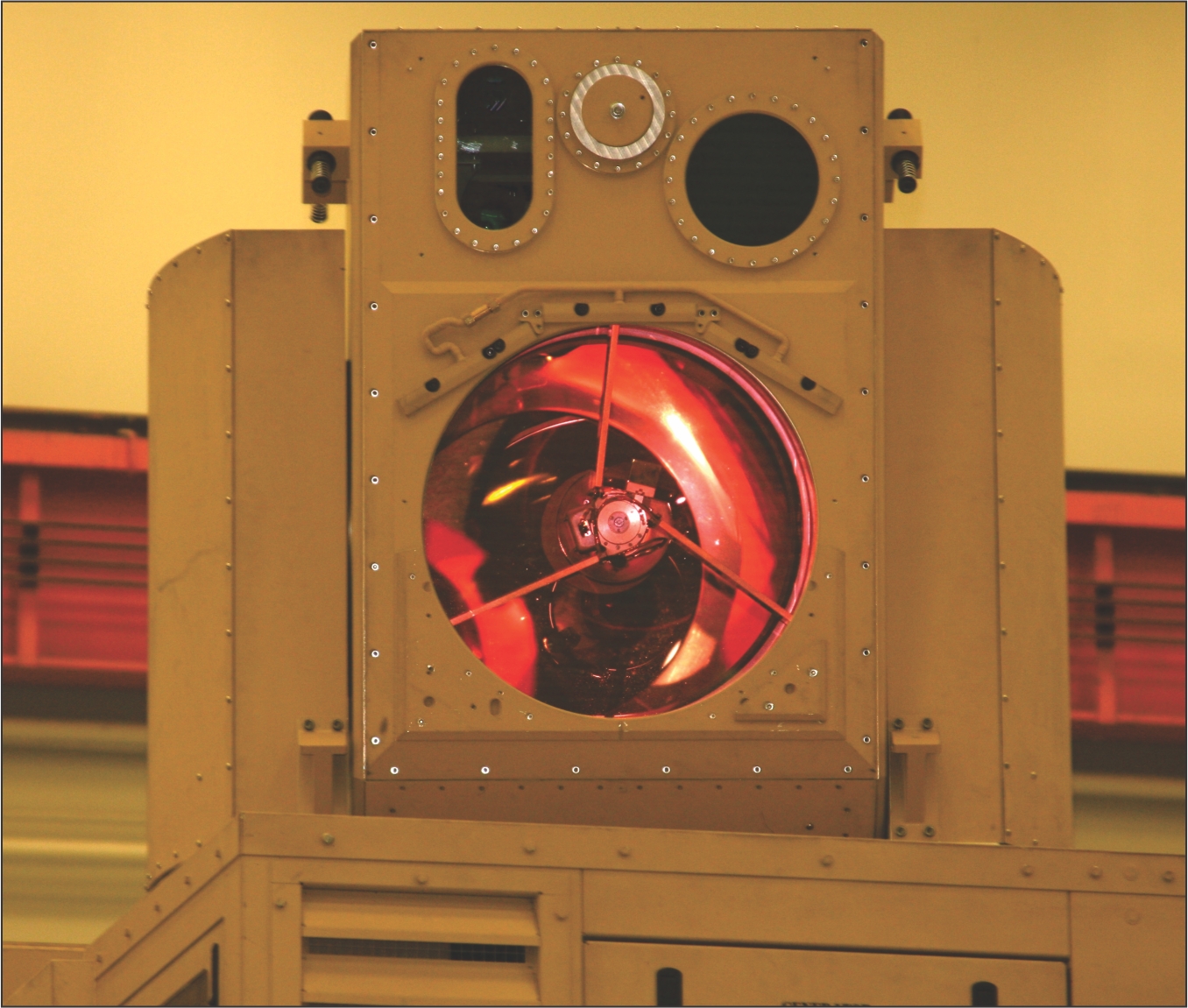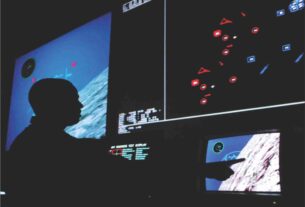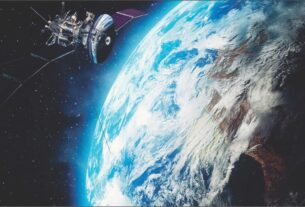After the laser ‘dazzler’ that can disorient an enemy fighter pilot or disrupt the guidance system of airborne missiles emerged from the Defence Research and Development Organisation laboratories other uses for the technology have been contemplated.
At the recent Defexpo 2014 on display was a Laser Science and Technology Centre produced Laser Ordnance Disposal System mounted on a one-ton like vehicle designed to seek and destroy landmines and improvised explosive devices. It is a requirement that has been acutely felt during the anti-Maoist operations in the dense jungles of the Jharkhand-Chhattisgarh-Odisha salient. Minefields and IEDs have long been a part of the Maoist-Naxalite tactic in the ambush laid to trap security forces in hot pursuit.
Using a solid state laser to detect mines and IEDs from a distance of 250 meters it can burn them in situ.
Mounted on a four-wheeled light specialist vehicle (LSV) it carries a compact onboard generator to power the sensors and gadgetry and provides air conditioning to the operator and driver’s cabin. Be that as it may, it needs to be remembered that the vehicle described as a light specialist vehicle has to enter the combat zone to be able to fulfill its mission of dealing with the mines.
Engaging militants
With so much interaction between the DRDO and the armed forces it should have been in the notice of the scientists that the vehicle requires some modicum of protection especially the cabin in which the driver and the operator are seated.
As configured, this vehicle is a sitting duck for a light machine gun with a range of 500 meters which is standard equipment for the Maoists/Naxalites. Every ambush is laid so as to ensnare the target within the range of the weapons at hand be they rifles or rocket-propelled grenades or even hand grenades. The minefield is laid either to achieve surprise by attacking the lead vehicle/ group of security personnel on foot or to drive the victims into the trap.
A vehicle specialized for the mine-clearing role should be able to enter the ambush zone, clear the minefield and open the way for the follow-on forces to engage the militants without being destroyed by gunfire as has happened so often recently. There is a huge difference between de-mining operations in the midst of a combat situation and being able to deactivate a mine by burning it as part of a very important peacetime activity to ensure that accidents do not happen to anyone straying into a minefield. It appears that it is the latter condition for which the LORD system has been created.
In the larger context of a conflict between India and Pakistan and China either singly or collectively, India needs laser or direct energy weapons to reduce and nullify the danger posed by the missiles in both their arsenals.
India has also incorporated the use of laser technology in upgrading the arsenal of indigenously produced “dumb” or freefall bombs to precision guided munitions capable of making a single bomb be it of 250 kg or 500 kg or 1000 kg (depending on the kind of target that is intended to be demolished).
The fact that the laser guidance ensures that the bomb does not veer too far away from its intended destination is ensured by the seeker in the bomb’s nosecone which rides unerringly towards the spot illuminated by the laser beam either by another aircraft or by someone on the ground. Most of the time the bomb is bang on target and that is a quality that is the USP of laser guidance.
Neutralizing threats
One of the other likely important works that need to be accelerated is the use of lasers in neutralizing the ballistic missile and cruise missile threat to India from Pakistan and China. India is currently working on its Prithvi Advanced Air Defence System and has achieved several missile-to-missile interceptions as part of its Ballistic Missile Defence that it intends to place around the national capital Delhi and its economic hub, Mumbai.
As it stands, this posture will leave large tracks of the agricultural and industrial hub of the nation in Punjab that lie within reach of Pakistan’s short-range Nasr nuclear capable missile that can hit targets up to 60 km.
In the first instance India needs to demonstrate a technology that will neutralize all short-range nuclear capable missiles of Pakistan that could be used to target Punjab, Haryana, Rajasthan and New Delhi.
For this, it will have to deploy both land-based and airborne instruments that are capable of early detection of launch of any missile (and aircraft) from any site in Pakistan and set in motion interceptors to catch the missiles while they are still over Pakistani territory.
This would be a radically different approach to the Ballistic Missile Defence from the current thinking of intercepting the enemy missile in the terminal phase of its flight when it is descending towards its target in Indian territory.
To fears that such an interception would disperse radioactive debris over large swaths of Indian territory, Defence scientists have tried to make out that it would be a lesser disaster than an actual nuclear explosion wherein blast, firestorms and rampant radiation could affect even larger parts of Indian territory.
In such an ambiance of fatalism there is need to examine ways and means to be better able to defend India against a nuclear attack particularly from Pakistan which, by its constant harping on the possibility of a ‘nuclear flashpoint” has been threatening India time and again.
India should explore the possibility of taking aloft a laser directed energy weapon coupled to a long range reconnaissance and surveillance radar that can look deep into Pakistan and be ready to shoot down the Pakistani missile within the Pakistani territory itself.
With specific reference to the Nasr missile India needs a raised platform to detect launch and be able to swat the missile down as soon as it is fired in a low trajectory from a multi-barrel trailer, erector, launcher (TEL) vehicle.
By this method the missile will land inside Pakistan itself with the same consequences as would have visited India if it is intercepted inside Indian territory. A laser beam of 25 kilowatt power (which India is capable of) will be eminently useful.
The other threat from the missiles that can strike deeper into Indian territory can also be handled with a laser gun within the time span of between 100 seconds to 240 seconds that Pakistani missiles take to lift off from the launch pad. This is known as “boost-phase” interception and has to take into account whether the missile is liquid fuel or solid fuel and the total mass of the missile, which has a bearing on how quickly it can achieve the lift off and the laser beam to retaliate and punch a hole in it.
As it stands the ability to protect the political leadership with a PAAD umbrella over Delhi so as to be able to order the massive retaliation that is India’s ‘no first use and massive retaliation’ nuclear weapons policy can be nullified by an airburst of a Pakistani nuclear warhead which will unleash what is known as an electromagnetic pulse (EMP) that will destroy all terrestrial communications networks and prevent the political leadership from transmitting the order for retaliation.
Till this happens India will have to put some other methodology in place by which any attack on India anywhere would automatically unleash India’s retaliatory strike. That should be deterrent to any frivolous use of nuclear weapons by a nation that has demonstrated a trigger-happiness that is appalling.





